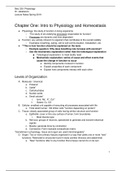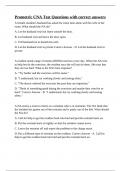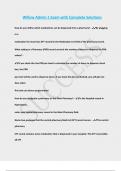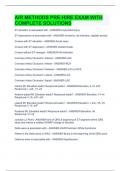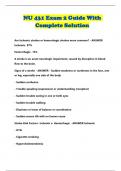10.1 Reversible reactions and dynamic equilibrium
Reversible reactions and dynamic equilibrium
the reaction between hydrogen and iodine is a reversible reaction
A system is said to be in equilibrium when there is no further change in the concentrations of the reactants
and products
As the mixture of hydrogen and iodine is heated, the gases start to react to form
hydrogen iodide. With increasing time, the concentrations of hydrogen and iodine
decrease so the rate of the forward reaction decreases
As soon as some hydrogen iodide is formed, it starts to slowly decompose and with
increasing time, the concentration of hydrogen iodide increases so the rate of the
backward reaction increases
Eventually, the rates of the forward and backward reaction become equal and
after this the concentration of reactants and products does not change
Dynamic equilibrium
- Closed system
- Reversible reaction
- Forward and backward reactions are continuously occurring
- Rate of forwards and backwards reaction are equal
- Concentrations of reactants and products remain constant
The effect of changes in conditions on equilibrium composition
Le Chatelier’s principle: if a change in conditions occurs in a system, the equilibrium position will change to
counteract the change made
Effect of a change in concentration:
Increases rate of reaction – more particles present in solution, more frequent collisions, more successful
collisions with sufficient activation energy
- Increasing the concentration of reactant shifts equilibrium to the right – more products form
- Decreasing the concentration of a reactant shifts equilibrium to the left – less products form
Effect of a change in temperature:
Increases rate of reaction – particles have more kinetic energy, move around more, more frequent collisions,
more successful collisions with sufficient activation energy
- Increasing the temperature shifts equilibrium in endothermic direction
- Decreasing the temperature shifts equilibrium in exothermic direction
If the temperature of an equilibrium mixture increases, the rates of both forward and backward reactions will
increase however the increase in the rate of the endothermic reaction is greater than the exothermic reaction
Effect of a change in pressure:
Increases rate of reaction – particles are closer together, more frequent collisions, more successful collisions
with sufficient activation energy
- Increasing the pressure shifts equilibrium to side with fewer moles
- Decreasing the pressure shifts equilibrium to side with more moles
- Number of moles of reactants and products are equal - no change in equilibrium position
Effect of adding a catalyst:
- The rate of both forward and backward reactions will increase to the same extent - position of
equilibrium is not changed
- Provides an alternative pathway with lower activation energy – more successful collisions, increased
rate of reaction
,10.2 Equilibrium position
The equilibrium constant
Kc = products/reactants
aA + bB cC + dD
balancing numbers are equal to the powers in Kc equation
concentration = mol dm-3
work out Kc units – can have no units if units cancel each other out
only changes in temperature affect the value of Kc
- An increase in temperature decreases Kc
- A decrease in temperature increases Kc
Homogeneous system – all reactants and products are in the same state
Heterogeneous system – at least two different states in reactants and products
Kc can be used to predict the effect of concentration on the equilibrium position
- If the concentration of a reactant is increased, the value of the denominator in the expression
increases which causes the value of Kc to decrease
Reversible reactions in industry
Haber process – produces ammonia
N2 (g) + 3H2 (g) � 2NH3 (g) ΔH = - 92 kJ mol-1 (forwards reaction is exothermic)
Reaction between nitrogen and hydrogen is extremely slow at room temperature due to the strong nitrogen
triple bond – high activation energy required
Conditions:
Fe catalyst – increases rate of reaction, equilibrium is reached faster, does not function effectively at low
temperatures
250 atm – high pressure increases yield of ammonia but cannot be too high – energy costs of maintaining the
pressure
450°C – higher temperature would decrease yield of ammonia and expensive to maintain – high energy costs
so a lower temperature is a compromise
The Contact process – produces sulfuric acid
SO2 (g) + ½ O2 (g) � SO3 (g) ΔH = - 96 kJ mol-1 (forwards reaction is exothermic)
Conditions:
Solid vanadium(V) oxide, V2O5 catalyst
2 atm – the yield of SO3 is already very high at 1 atm (97%)
450°C – low temperature increases yield of SO3 but catalyst would not be very effective at low temperatures
,Topic 11 – Equilibrium II
Kp – Gaseous Equilibrium Constant
- Used for gaseous equilibria
- The system is homogeneous if all the reactants and products are in the gaseous state
- Each gas has a partial pressure (P) in a gaseous system and these add up to the total system pressure
- Partial pressure = mole fraction x total pressure:
Calculating Kp:
- Kp = product of partial pressures of products / product of partial pressures of reactants
- The units can be calculated by substituting partial pressure units into the Kp expression
2A + 3B Y + 2Z
It can also be used to calculate Kp for a heterogenous reaction but any solids are not included in the reaction
e.g. CaCo3 (s) � CaO(s) + CO2(g) CaCo3 and CaO not included in equation for Kp, Kp = (PCO2)
Factors affecting Kc and Kp:
- Only affected by temperature: not affected by concentration or pressure changes or use of a catalyst
- Catalysts affect the rate of reaction but not the equilibrium position – only affect the rate at which
equilibrium is reached, no impact on equilibrium constant
- If the forwards reaction is exothermic, an increase in temperature will cause equilibrium to shift to
the left to counteract the change, decreases product concentrations and increases reactant
concentrations decrease in equilibrium constant (Kc or Kp)
- If the forwards reaction is endothermic, an increase in temperature will cause equilibrium to shift to
the right to counteract the change, increases product concentrations and decreases reactant
concentrations increase in equilibrium constant (Kc or Kp)
, Topic 12 – Acid-base equilibria
12.1 Strong and weak acids
The Brønsted–Lowry theory
Acid-base equilibria involves the transfer of protons between substances
Brønsted–Lowry acid – proton donor
Brønsted–Lowry base – proton acceptor
Lewis Theory: lone pair acceptor – acid, lone pair donor – base
Conjugate acid-base pairs:
- A conjugate acid is the species formed when a base accepts a proton
- A conjugate base is the species formed when an acid donates a proton
Strong acid – fully dissociates into its ions in solution
HX H+(aq) + X-(aq)
Weak acid – partially dissociates into its ions in solution
HX � H+(aq) + X-(aq)
Monoprotic/monobasic acid – one proton release per molecule e.g HCl, HNO3, CH3COOH
Diprotic/dibasic acid – two protons released per molecule e.g. H2SO4, H2C2O4
Triprotic/tribasic acid – three protons released per molecule e.g. H3PO4
Strong base – fully dissociates into its ions in solution
Weak base – partially dissociates into its ions in solution
Monoprotic/monoacidic base – accepts one proton
Diprotic/diacidic base – accepts two protons
Triprotic/ triacidic base – accepts three protons
A substance that can act as an acid or a base is amphoteric
e.g. in its reaction with HCl, H2O behaves as a base by accepting a proton
but in reaction with NH3, H2O behaves as an acid by donating a proton

